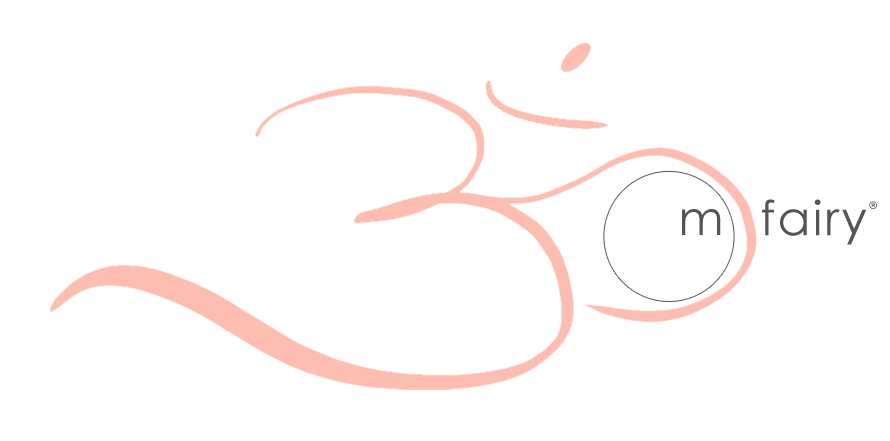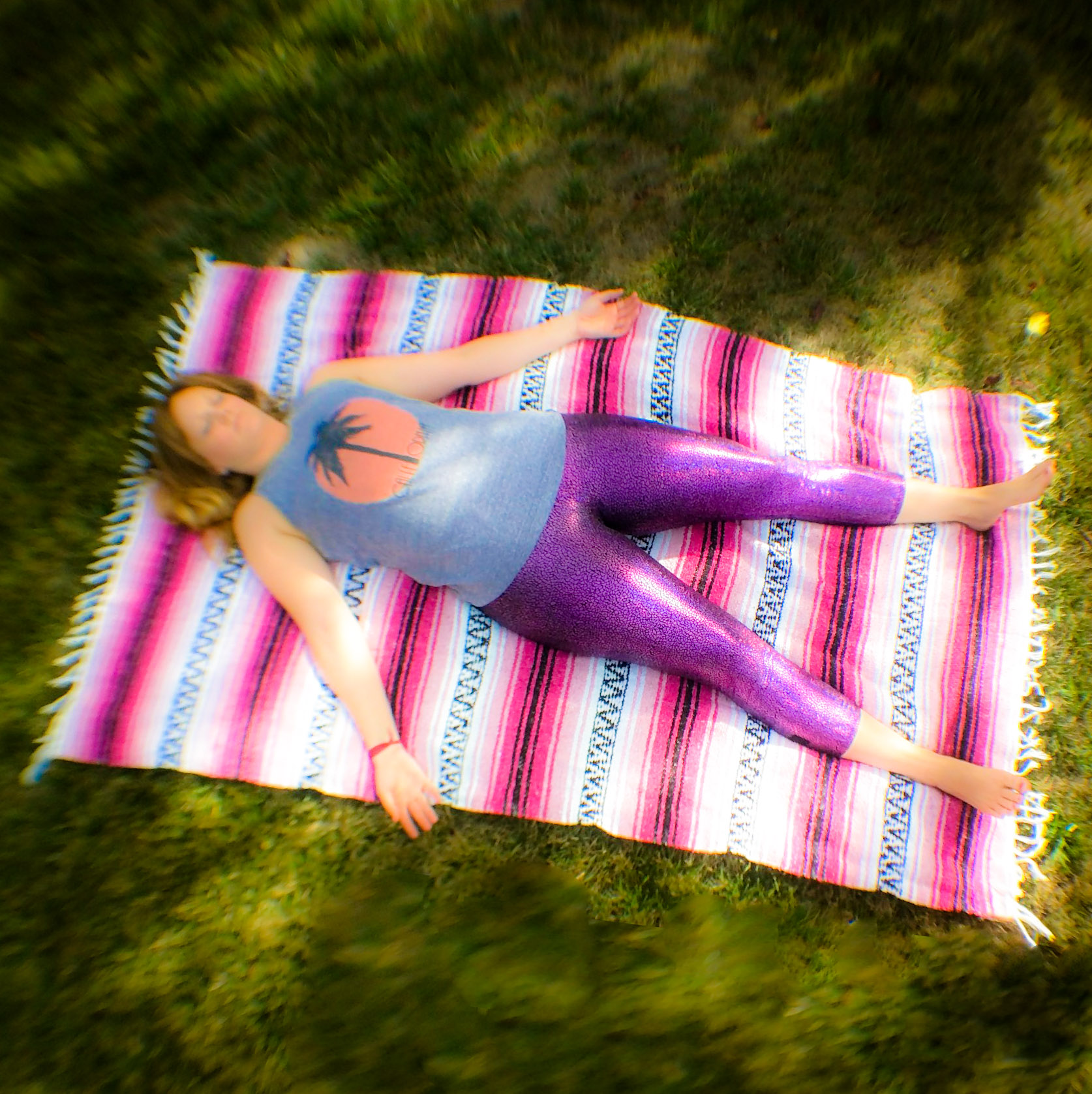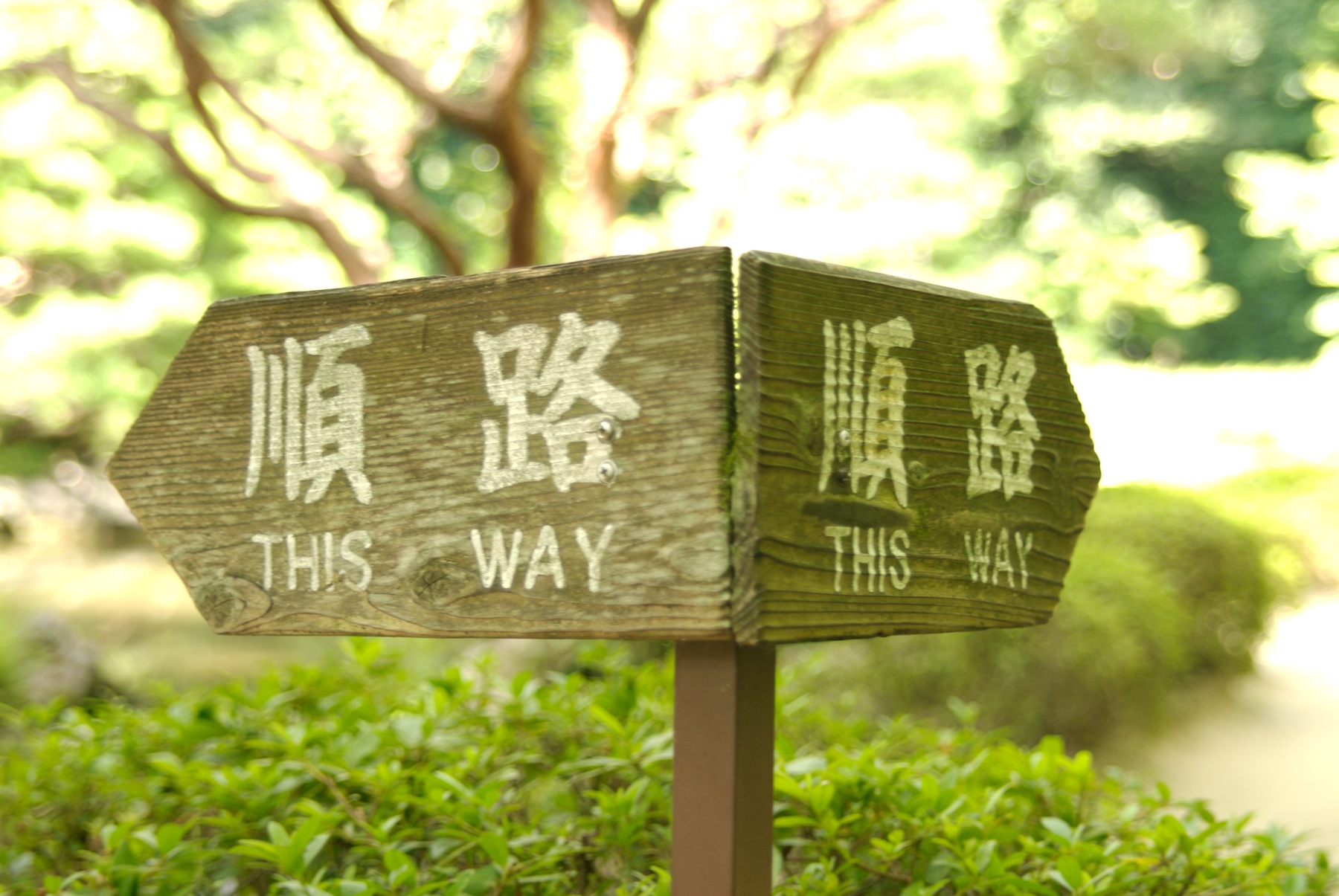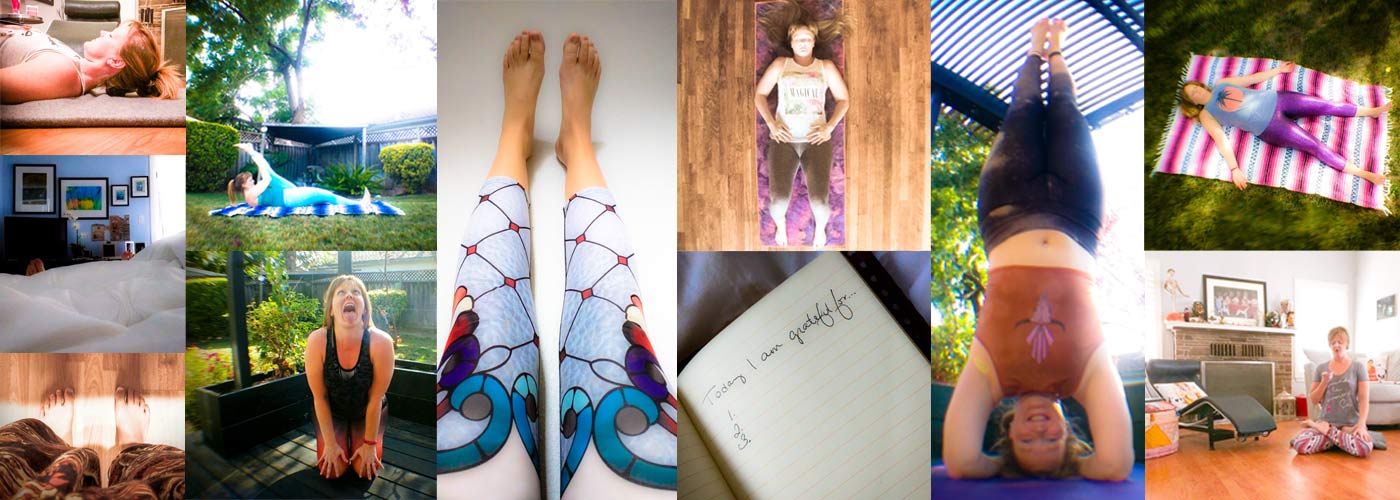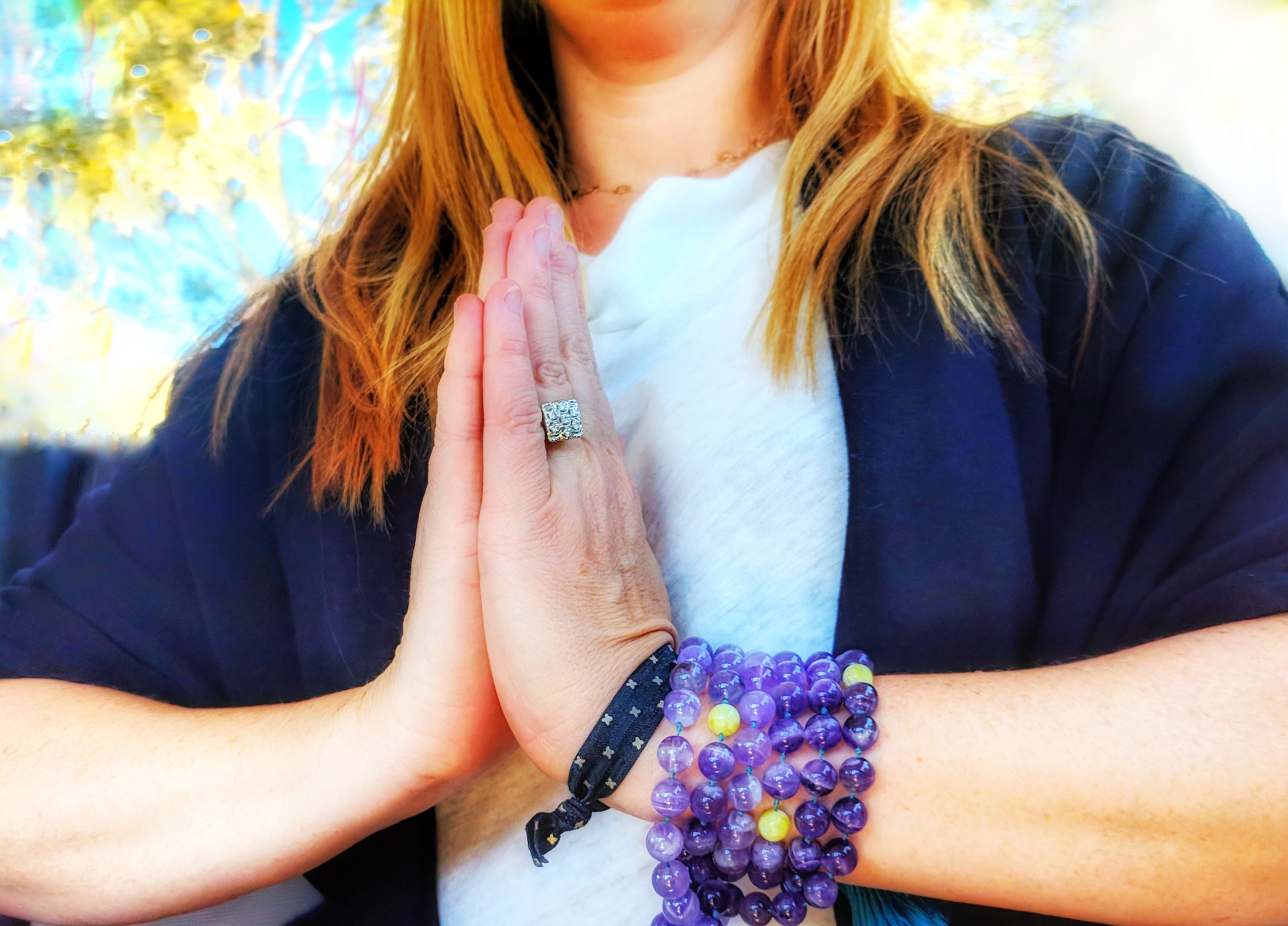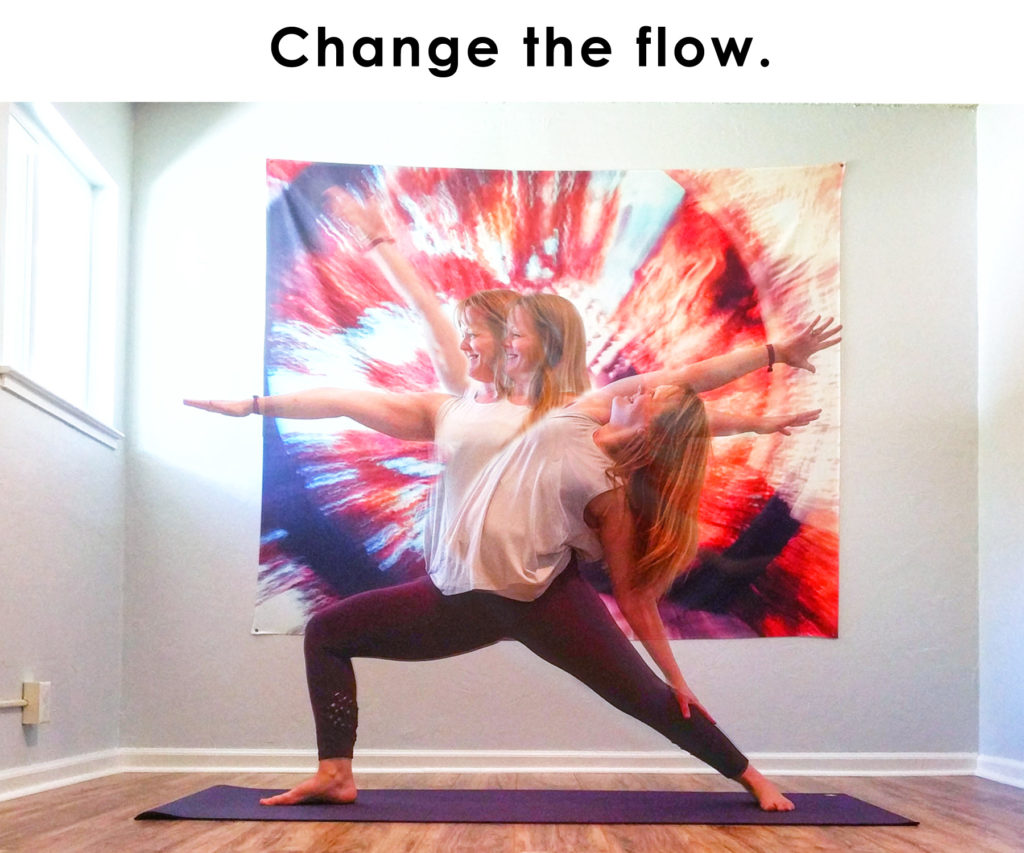
You’ll notice when you come to a Flow & Hold® class that instead of moving through the same flow multiple times, we often change it up every time we start anew. Even in doing sun salutations, I will often move through different versions instead of sticking with a singular kind.
Sun Salutations are lovely. Even though they were the part of my practice I least liked in the beginning, I’ve grown to not just appreciate them but really love them as part of my practice, so much so that the flow portion of my practice became longer and longer over time. I invite you to do a couple of rounds of your preferred sun salutation, and then just take a moment and reflect on how you feel.
Do you feel warm? Good? Like you worked out the kinks? That’s just a few of the great things about this base set of movements we see in vinyasa and flow classes. How much did you have to think about where you were headed next? Did you modify for any injuries in the shoulder or wrists? Is there any part of your body that feels more worn than the others? Was your mind completely focused on exploring all of the movements and sensations you were feeling in your body, or did it have time to skip out and think about lunch, dinner, the kids, work? Of course, these answers may vary on any given day and depending on how often sun salutations are a part of your practice.
From the line of questioning, you can probably see where I’m going with the idea of “changing the flow”. When we move through something so familiar to us, it allows us to not have to think quite so much. We’ve done it so often we can operate from muscle memory. Our brains already know the route we are going to take, and barring any new injuries or tensions, the brain can predict where we are going and send those signals out to the body parts autonomously, freeing you from the need to focus on what is at hand. Some might say, “…but Courtney, that’s why I’m doing yoga, to build that focus.” If you easily have the ability to keep the mind in the moment, great! However, if you have a hard time shaking all the thoughts that cling to you from your day and your worries, changing things up might be just the answer.
Each section of Flow & Hold has a different purpose when it comes to how we are achieving focus with the mind. We’ll talk about the holding portion later, but in short, it’s the chance to get quiet and see what lives inside. When we first come to the mat, we’re trying to create this break from our day, shifting our focus from our busy lives to carving out this time for ourselves. I think of my asana practice as the complete package – not just asana, but pranayama, meditation – all happening here in the time I’ve allotted myself. It might be easy to drop all the mind stuff when you come to resting on the mat, but I’ve found that to be more of an exception than the rule.
So flow, and changing the flow. When we change the flow, we can no longer predict where we are going. We are no longer on autopilot. It takes all of our focus to communicate with our bodies, understanding how I now get this body part to move here, since it may not have traveled that path before. We wake up the brain, creating new neural pathways as we explore these new movements. Instead of deepening the grooves and connections of the familiar flow (which has its benefits), we now make new connections. We start to see new patterns and opportunities that we might not have seen before. You may start to notice how some transitions feel familiar, similar to something that is deeply embedded within you. It opens the possibilities for creativity as you decide to guide yourself through practice. And, with all of this focus on simply moving our body from one place to the next, it forces us to drop the mind patterns we brought with us into the studio, onto the mat. If my focus is captured trying to coordinate my breath and learn this new body movement, it’s really hard to add to it planning dinner and ruminating on my to do list. At best I might throw my mantra in there somewhere, but it’s doubtful. It’s one way to flip the focus.
That’s the mental aspect of changing the flow, but there’s also the physical. I talk more about my goals with an asana practice in this post, but in short, my goal is not to become the best at a certain pose or sequence. My goal is to be a well-functioning human from the physiological standpoint in any given situation, and our bodies move in a lot of different ways. If we always practice the same flow, our bodies get really good at moving through those ranges of motion, and not so good at motions they don’t regularly perform. So I introduce variability into my flow. Instead of exhausting my wrists and shoulders from doing chaturanga over and over, I may do one or two or none before I change the flow and find another way to strengthen my core or my back body. If I always flow into cobra or half moon or up dog or warrior 2 in the same way, I get really great at that one movement. Try it a different way and my body struggles. So I change it up, finding new ways to come into these balances, backbends, strengthening poses. Finding new ways to back bend, forward bend, and strengthen. The result is my body develops strength and range from so many different aspects that overall I become stronger and develop more range of motion than if I had just continued performing sun salutation or if I always step into warrior from the back of my mat but never the front, or from the earth but never from hovering a leg.
And then, maybe, you drop back to the familiar. End with a sun salutation. See how it feels. Does it feel like relief? Comforting? Is the mind clear? It’s always a fun contrast for a group who is new to changing up the flow.
